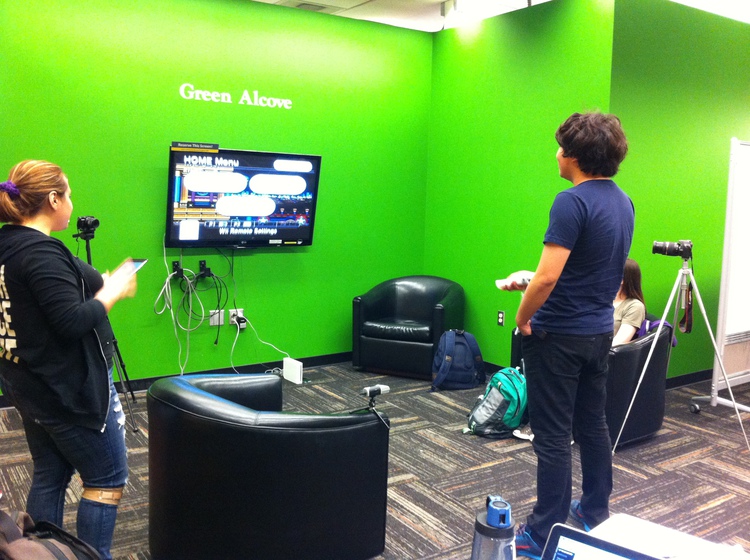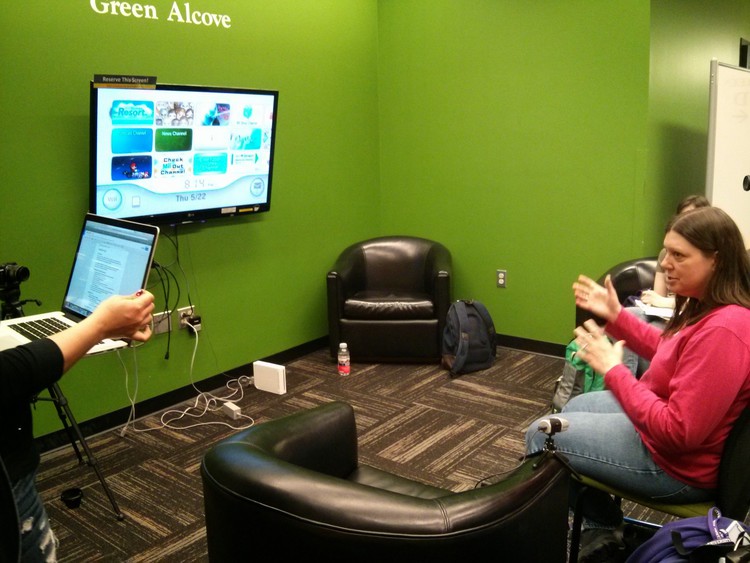Activity and Process
One of our research hypotheses was that interacting with an active 3D gesture interface, where interactions are communicated with the main device through a remote or supplementary device, such as the Wii remote would be easier and more enjoyable than interacting with hand gestures alone (Passive 3D gesture systems like Kinect). Therefore, We conducted a usability test on the Wii, testing both generic Wii menu interactions, and the gameplay interactions on a game called Wii Sports Resort. We first asked participants about their general gameplay habits and if they were familiar with the Wii. Participants were asked to open the game from the Wii home menu, and navigate to both the Swordplay and Table Tennis games. They were then asked to play a couple rounds of each game. After two rounds of a game had been completed, we interviewed the participants about their experience playing the game: what they thought about the controls, level of difficulty, and their level of enjoyment. After both games had been completed, we asked them to rate their overall experience of gameplay, and to give specific examples.


Key Observations and Takeaway
Based on what we saw during gameplay, we came up with a tentative theory as to why some users may prefer remote-assisted gestures to pure hand gestures: The remote, in this case the Wii remote, was something tangible to the user, and so the user felt more in control of their actions when using the remote versus using only their hands. In completing this exercise, we rediscovered the value of conducting a usability test with novice users. In addition to this being a good practice in general when attracting and keeping new customers, we also found that features we took for granted were not necessarily obvious or easy to use for novice users. We also discovered one of the challenges of conducting a usability test on a game: Think-aloud protocol, i.e. getting the tester to talk about what they are doing or feeling while using an interface, is not necessarily a good idea in the context of testing a game. We found that when our participants had to think about what they were doing and articulate it to us in the moment, their gameplay suffered. This in turn created a feedback loop of talking about challenges and frustrations, which caused their performance to suffer. Consequently, our task completion time findings were not as accurate as they could’ve been.
Implications for Design and Moving Forward
Based on our observations and participant responses, we think the tangibility and haptic feedback of a physical controller provides a more concrete mapping, helping the user to feel more in-control of the situation. Our findings have indicated the importance of visual feedback and mapping when designing an interface. Speed, interval between action/result, and force are something else to consider when designing gestures. The Wii interface is something we will keep in mind once we start prototyping.
Once we thought about our findings, we realized something else interesting: Do users generally prefer active 3D gestures because they are much more responsive and accurate than their passive counterparts? Would their preference change if the passive ones were just as good as the active ones? What if they were better? In order to address these questions, we have planned to do a second round of usability testing, this time incorporating a Wizard-Of-Oz method: What would happen if we Wizard-Of-Oz the passive 3D interactions systems so that they are performing as well as the active ones? We have planned this research activity for the week of June 23rd.
Media Needed: Usability Testing Image (research —> evaluative research —> photos from heuristic analysis and usability testing)
